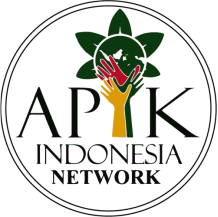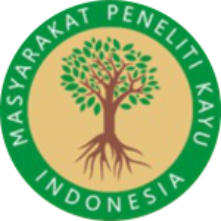Keanekaragaman Serangga Yang Berpotensi Hama Di Hutan Pendidikan Universitas Jambi
Diverstity Of Potential Pest Insect In Jambi University Education Forest
DOI:
https://doi.org/10.22437/jurnalsilvatropika.v7i2.34671Keywords:
Education Forest of Jambi UniversiEducation Forest of Jambi University, Insect, Trapping methodsAbstract
ABSTRACT
This research is to identify the types of insect pests with four trapping methods, there are Sweep Net Trap, Pit Fall Trap, Yellow Paper Trap, and Light Trap. This research aims to identify the types of insect pests that can be used as recommendations in pest control. This research was conducted in the educational forest of Jambi University, Mendalo campus, from July to October 2023. The methods used for insect identification were swept net trap, pitfall trap, yellow paper trap, and light trap. The sweep net trap method found 25.31% of wood locusts (Valanga nigricornis), 56.52% of pharaoh ants (Monomorium pharaonis) were found in the pitfall trap method, the yellow paper trap method found 97.58% of fruit flies (Bactrocera spp), and the light trap method found 92.58% of subterranean termite (Macrotermes gilvus). The method used for forest disease identification is by looking at the forest disease book for the identification process. The identification results stated that 13.46% found sooty dew disease, and 11.54% found stem cancer and wilt disease. For this exploration ventures into the different orders of these forest pest insect, revealing the beauty in ther diversity. Like the various species of trees in a forest, eac\h order contributes its unique essence to the overall harmony of the ecosystem. From defoliation to shift in biodiversity, the impact of forest pest insects touches both the heart of nature and the economics that rely on this forest.
Keywords: Education Forest of Jambi University, Insect, Trapping methods
ABSTRAK
Penelitian ini mengidentifikasi jenis-jenis serangga hama dengan empat metode perangkap, yaitu Sweep Net Trap, Pit Fall Trap, Yellow Paper Trap, dan Light Trap. Penelitian ini bertujuan untuk mengidentifikasi jenis-jenis serangga hama yang dapat digunakan sebagai rekomendasi dalam pengendalian hama. Penelitian ini dilaksanakan di hutan pendidikan Universitas Jambi, kampus Mendalo, pada bulan Juli hingga Oktober 2023. Metode yang digunakan untuk identifikasi serangga adalah swept net trap, pitfall trap, yellow paper trap, dan light trap. Metode sweep net trap menemukan 25,31% belalang kayu (Valanga nigricornis), 56,52% semut firaun (Monomorium pharaonis) ditemukan pada metode pitfall trap, metode yellow paper trap menemukan 97,58% lalat buah (Bactrocera spp), dan metode light trap menemukan 92,58% rayap tanah (Macrotermes gilvus). Metode yang digunakan untuk identifikasi penyakit hutan adalah dengan melihat buku penyakit hutan untuk proses identifikasi. Hasil identifikasi menyatakan bahwa 13,46% ditemukan penyakit embun jelaga, dan 11,54% ditemukan penyakit kanker batang dan layu. Eksplorasi ini menjelajahi berbagai ordo serangga hama hutan ini, mengungkapkan keindahan dalam keanekaragaman. Seperti halnya berbagai spesies pohon di hutan, setiap ordo menyumbangkan esensi uniknya bagi keselarasan ekosistem secara keseluruhan. Dari defoliasi hingga pergeseran keanekaragaman hayati, dampak serangga hama hutan menyentuh jantung alam dan ekonomi yang bergantung pada hutan.
Katakunci: Hutan Pendidikan Universitas Jambi, Metode Perangkap, Serangga
Downloads
References
Arini, A., Suhendra, M., Chahyadi, E., Wahibah, N. N., & Parlaongan, A. (2022). Studi Pendahuluan Keanekaragaman Hymenoptera Parasitoid di Kawasan Hijau Kampus UNRI, Panam. EduBiologia: Biological Science and Education Journal, 2(1), 48– 54
Borror. (1996). Introduction To The Study Of Insects 6th Edition. Yogyakarta: Gadjah Mada University.
Christian, W., & G. Gottsberger. 2000. Diversity Preys in Crops Pollination. Crop Science. Vol. 40 (5).
Fantahun, Habtamu Chekol. 2021. “Coffee (Coffea Arabica L.) Cultivation Guide at the Centre for Native Trees Propagation and Biodiversity Development in Ethiopia Coffee Cultivation Guide for Growers on the Forest and Plantation Farm Areas in Ethiopia Habtamu Chekol Fantahun;” (June):0–90
Fitria N. 2013. Komunitas Semut pada Bunga Jantan Kelapa Sawit di Kebun Cimulang di PTPN VIII Bogor, Jawa Barat [Skripsi]. Bogor (ID): Institut Pertanian Bogor.
Heviyanti, M. and Syahril, M. (2018) ‘Keanekaragaman dan Kelimpahan Serangga Hama dan Predator pada Tanaman Padi (Oryza sativa) di Desa Paya Rahat, Kabupaten Aceh Tamiang’, Agrosamudra, 5(2), pp. 31–38
Inward, Daegan, George Beccaloni, and Paul Eggleton. 2007. “Death of an Order: A Comprehensive Molecular Phylogenetic Study Confirms That Termites Are Eusocial Cockroaches.” Biology Letters 3(3):331–35. doi: 10.1098/rsbl.2007.0102
Kalshoven. 1981. The Pests of Crops in Indonesia. Laan PA van der, penerjemah Jakarta: Ichtiar Baru-Van Hoeven. Terjemahan dari: De Plagen van de Culture Gewassen in Indonesia. P.T Ichtiar Baru. Jakarta
Kristiaga Zakeus Candra Jaya, Sutoyo, dan I Made Indra Agstya. 2020. Kelimphan serangga musuh alami dan serangga hama pada ekosistem tanaman cabai merah (Capsicum Annum L.) pada fase vegetative di Kecamatan Dau Kabupaten Malang. Jurnal Penelitian Pertanian Terapan Vol. 20 (3): 230-236
Lo, Nathan, Gaku Tokuda, Hirofumi Watanabe, Harley Rose, Michael Slaytor, Kiyoto Maekawa, Claudio Bandi, and Hiroaki Noda. 2000. “Evidence from Multiple Gene Seqeunces Indicates That Termites Evolved from Wood-Feeding Cockroaches.” Current Biology 10(13):801–4. doi: 10.1016/S0960-9822(00)00561-3.
Moust, Jos et all. (2021). Introduction to Problem-based Learning: A Guide For Students (4thed). Groningen: Noordhoff Uitgevers Gorningen/Houten
Nia Ardianita, Dwi Oktafitria, Annisa Rahmawati, dan Eko Purnomo. 2024. Keragaman Hymenoptera di lahan reklamasi sistem teknolohi modifikasi terasering di lahan bekas penambangan batu kapur. BIOMA: Jurnal Biologi dan Pembelajaran Biologi Vol 9(1): 59-70
Pujiastuti. 2009. Penggunaan Atraktan dalam Monitoring Keanekaragaman Spesies dan sebaran Lalat Buah (Diptera: Tephtitidae) pada Tanaman Buah di Berbagai Ketinggian Tempat. Jurnal Entomologi Indonesia 17(3); 125
Puspitasari Mahardika, Susilawati, dan Nadzirum Mubin. 2021. Rayap pada beberapa tanaman Perkebunan serta teknik pengelolaanya. Perspektif, Rev.Pen. Tan. Industri Vol.20 No. 2: 121-132
Rahmawati, Yuli Putri. 2014. Ketertarikan Lalat Buah Bactrocera sp Pada Senyawa Atraktan Yang Mengandung Campuran Protein dan Metil Eugenol. [Skripsi]. Universitas Negeri Semarang
Rahmawati Reni, Eritha Kristiana Firdara, dan R. Setiadi. 2021. Identifikasi Jenis Hama dan Penyakit Pada Tanaman Balangeran (Shorea balangeran Korth). Jurnal Hutan Tropika Vol. 16 (1): 1-14
Ruswandi A. 2017. Nilai ekonomi pengendalian lalat buah pada mangga gedong gincu: studi kasus di Desa Jembar Wangi Kecamatan Tomo, Sumedang. Creat Res J. 3(1): 25-36
Safitri, D. Y. (2016). Tingkat SeranganHama pada Tanaman Jabon (Anthocephalus cadamba Miq.) di Desa Negara Ratu II KecamatanNatar Kabupaten Lampung Selatan
Sanjaya, Y. and Dibiyantoro, A. L. H. (2012) ‘(Capsicum Annuum) Yang Diberi Pestisida Sintetis Versus
Biopestisida Racun Laba-Laba (Nephila Sp.)’, J.HPT Tropika, 12(2), pp. 192–199.
Shanbhag, Rashmi R., and R. Sundararaj. 2013. “Host Range, Pest Status and Distribution of Wood Destroying Termites of India.” Journal of Tropical Asian Entomology 02(1):12–26
Siska Lesiana Adhi, Mochamad Hadi dan Udi Tarwotjo. 2017. Keanekaragaman Dan Kelimpahan Seut Sebagai Predator Hama Tanaman Padi di Lahan Sawah Organic dan Anorganik Kecamatan Karanganom Kabupaten Klaten. Bioma Vol 19(2): 125-135
Soetjipta. (1993). Dasar-Dasar Ekologi Hewan. Jakarta: Depertemen Pendidikan dan Kebudayaan Direktorat Jendral Pendidikan Tinggi
Subekti N, Duryadi D, Nandika D, Surjokusumo S, Anwar S. 2007. Karakteristik habitat rayap tanahMacrotermes gilvus Hagen di Taman Nasional Ujung Kulon. Jurnal MIPA 30:227–232 (4)
Subyanto. 2000. Ilmu Hama Hutan. Buku. Universitas Gajah Mada. Yogyakarta. 297 hlm
Umboh, N. T., Pinaria, B. A. N. and Manueke, J. (2014) ‘Jenis Dan Kepadatan Populasi Serangga Pada Pertanaman Padi Sawah Fase Vegetatif di Desa Talawaan Kecamatan Talawaan Kabupaten Minahasa Utara’, Cocos, 5(1)
Wijaya I Nyoman, Wayan Adiartayasa, dan I Gede Bagus Dwipananda. 2018. Kerusakan dan Kerugian Akibat Serangan Lalat Buah (Diptera: Tepthritidae) pada Pertanaman Jeruk. Agrotrop 8(1): 65-70
Downloads
Published
How to Cite
Issue
Section
License
Copyright (c) 2023 Jenny Rumondang, Asniwita Asniwita, Wahyu Saputra RB, Eni Lestari

This work is licensed under a Creative Commons Attribution 4.0 International License.















